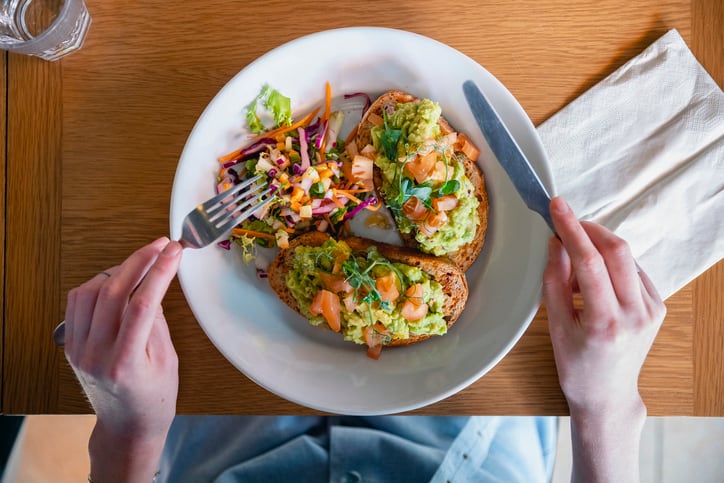Although the current plant-based trend started in the West, plant-based foods are not new in Asia, with traditional staples such as soy, seaweed, wheat gluten, or mushrooms prevalent.
This has since evolved, and recent plant-based foods introduced in the region include Philippines’ meat free Giniling (stewed ground meat), Hong Kong’s meat-free dim sum, Japan’s plant-based yakiniku, Lao’s meat-less larb (meat salad) and Malaysia’s plant-based ayam goreng.
Taste is crucial for consumers in this region, so it is important to develop products that are familiar to them, said Claire Sullivan, Strategic Marketing Director, Food, Meat and Beverages at Kerry.
However, current meat alternatives still fall short of consumer expectations. A 2021 Kerry study found that 70% of APAC respondents believe that taste and texture does not replicate actual meats and would make plant-based foods a regular part of their diet if resolved.
Formulation priorities
For companies starting out in this space, Sullivan recommends to focus on texture first. “If you are only starting to work on plant-based meat products, start with the protein and optimise its texture first, as it has an impact to the overall taste.
“If you want to fortify or improve the nutritional value of your product, that should come second as it can have some off notes too.”
“Then you work on taste and masking off notes. The saltiness, acidity and sweetness aspects can be adjusted with other tools based on your product guidelines.
The next challenge manufacturers face is getting their products to be succulent and juicy while creating an authentic meat-like experience for consumers.
Sullivan highlighted: “A good plant-based product is when all of the product attributes are optimised, the colour and appearance is appealing, texture is good, there is a great aroma and tastes good.”
According to her, if brands can dial up the emotive appeal of plant-based meat alternatives, it can help create stand-out products in a competitive market.
“There’s an opportunity to build on the positive emotions around plant-based, from ‘meat-free’ to ‘deliciously plant-based’. Instead of delivering on enjoyment and indulgence, manufacturers have been focusing more on clinical and prescriptive claims and environmental plus points. When you lead with a negative emotion such as avoid meat because it’s better for health and the planet, you eliminate the fun and indulgence that consumers associate with meat.”
Recently, the Kerry Group enhanced its plant-based solution Radicle to cater to the needs of consumers in South East Asia.
Radicle is a portfolio of plant-based ingredients and solutions to help manufactures create plant-based foods that are nutritionally optimised with cleaner labels, authentic taste and appealing texture.
Asia’s plant-based market
Asia is now the second largest region in the world for meat alternatives, accounting for 22% of global sales by value. China is mostly leading the charge. Just in South East Asia alone, meat alternative launches have doubled in the last five years, with Thailand the fastest growing market in this region.
Indonesian firm Green Butcher is banking on localised flavours and spices to set itself apart form other plant-based meat firms. Some of its offerings include beefless rendang and chick’n satay with sambal taichan.
Brands can also improve the nutritional profile of meat alternatives and use different vegetable protein sources to create wider appeal.
For instance, Australian plant-based firm Eighth Day Foods has developed a plant-based meat alternative from sweet lupins, and New Zealand company Sustainable Foods is creating hemp-based meat alternatives.
Currently, formats like burgers and sausages dominate the retail landscape, so introducing new formats in the form of traditional Asian foods can further attract demand and be an easy introduction to plant-based foods.
For companies like Hero Protein and YouKuai in China, they developed products such as dumplings, pork strips, and buns to address the needs of Chinese consumers.
Who else is innovating?
One of our recent Growth Asia Interactive Broadcast Series editions focused on plant-based innovations and heard from a raft of experts on the importance of appealing to Asian tastes. (Watch on demand here)
An expert panel comprised of Thai Union Global Innovation Centre Director Dr Tunyawat Kasemsuwan, Roquette Head of Technical Developers Damien-Pierre Lesot, Biospringer APAC Innovation & Business Development Director Hugo Leclercq, Kerry AMEA Vice President and General Manager for Food and Meat Ronan Moloney, Impossible Foods Country manager (Singapore) Laurent Stevenart, and Hero Protein VP, Strategy and Operations Coco Tse assessed the topic in detail.
“The plant-based trend may have started in the west but the fact is that people like to feel at home when they eat – so although products such as burgers will always have a place, we believe that plant-based Asian food applications are what will play a pivotal role for the industry moving forward,” Dr Kasemsuwan said.
“Thai Union’s recently-launched plant-based range OMG Meat has a mix of these – we have fish burgers, crab cakes and chicken nuggets [but also] crab siu mai and pork buns. There are many new companies coming up that are also introducing plant-based products with a focus on localizing for local cultures.”
From an ingredients point of view, Lesot added that localisation is indeed a challenge, especially in Asia, but one that must be met to capture the market.
“Asian cuisine is very diverse and there are many textures and tastes to match – beef in a beef noodle soup is different from beef in a plant-based sausage or a burger, such as chicken cannot be the same as that in a chicken nugget,” he said.
“But the fact is that these cuisines must be accessed by the plant-based industry for that is what consumers want, and without mastering localization the market will not grow.”
At present, health and nutrition is still acknowledged as the top driver for consumers to try plant-based products in Asia.
“In China, the top factor driving consumers s still health, way above environment or sustainability concerns,” said Tse.
“So here, nutritional and health benefits still need to be the key communication proposition when selling plant-based products to consumers. There has been concern in China regarding animal protein after both ASF and the COVID-19 pandemic, so plant-based meat being able to match nutritional profiles without the risks [is definitely a plus].”
Leclerq concurred and added that clean label is becoming an increasing part of this story, emphasising that consumer education is also key to getting these messages through.
“With the growth of the industry has come the introduction of many new ingredients on food labels, many of which are not easily understood by consumers,” he said.
“Ingredient education to consumers is really key here such that they not only understand what is in the food [but also] understand the value of the product and are willing to become repeat consumers.”




